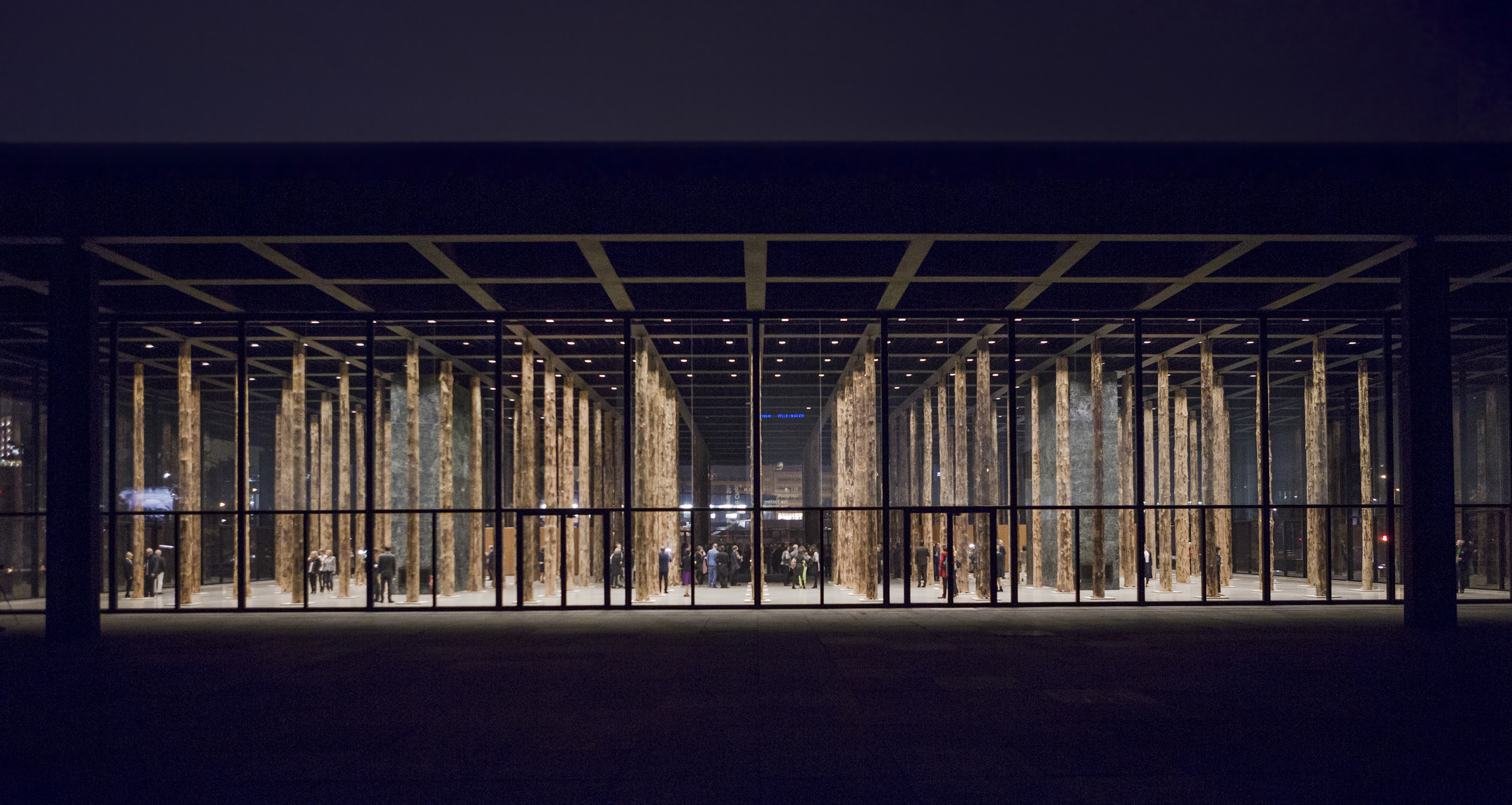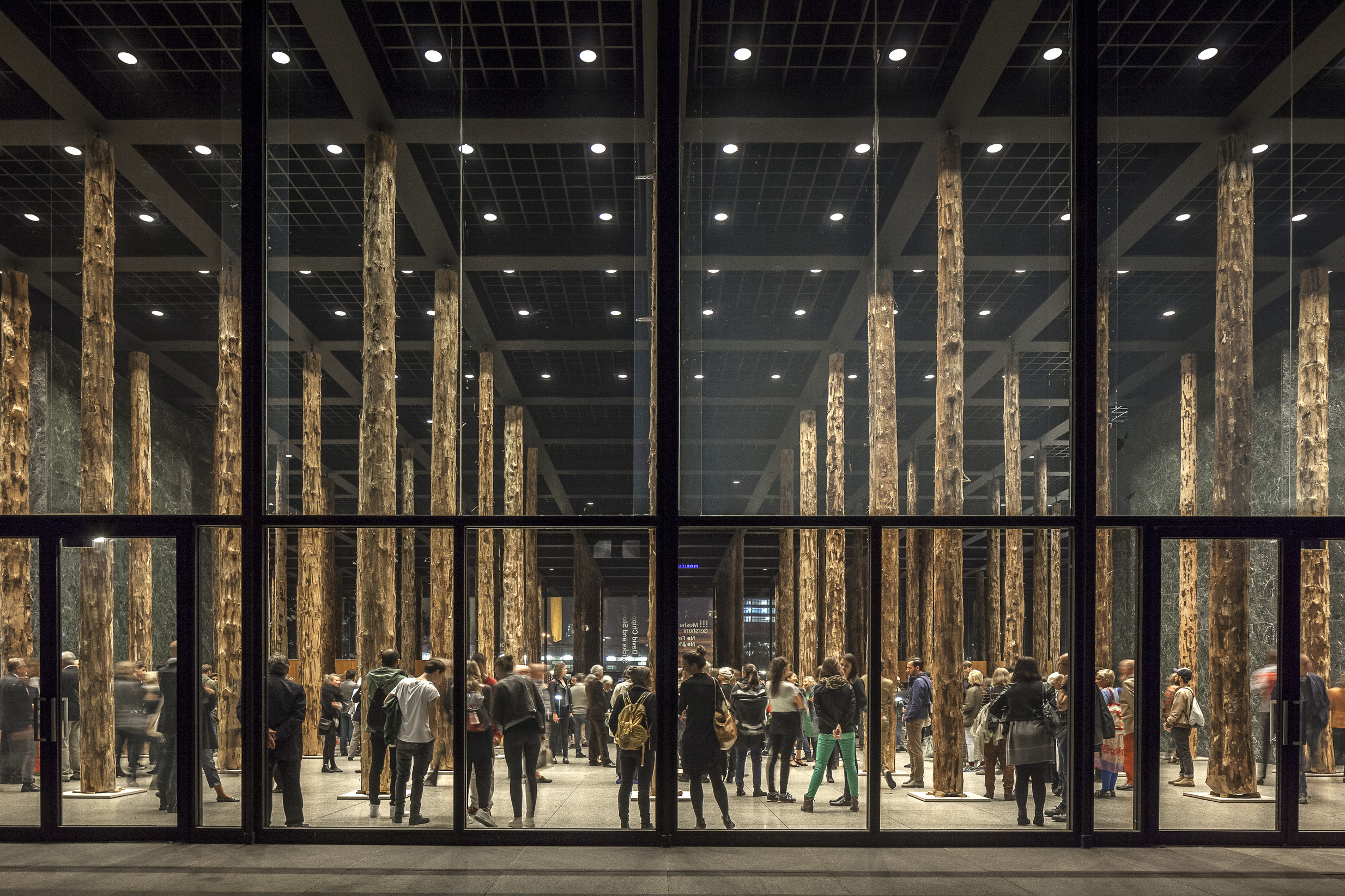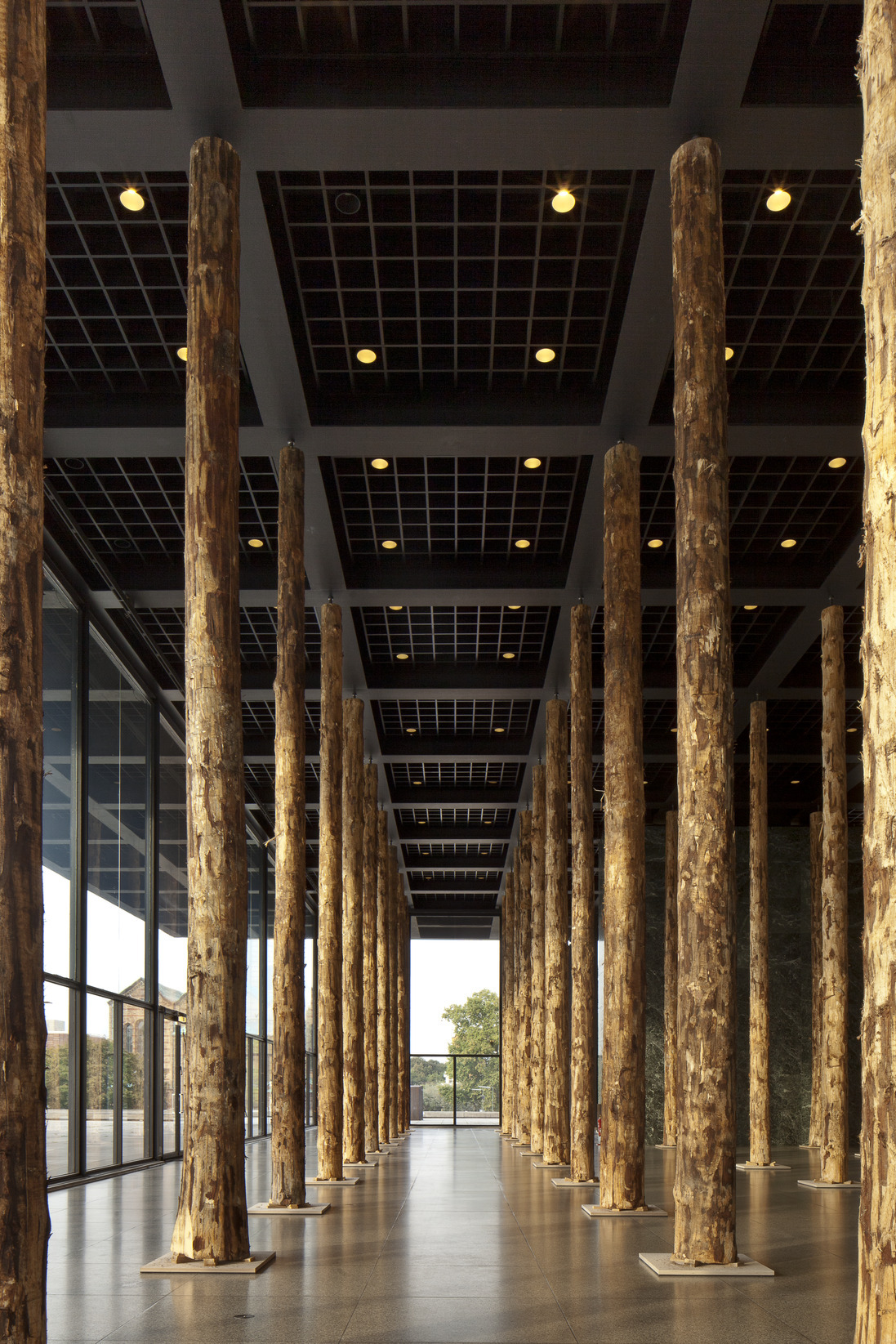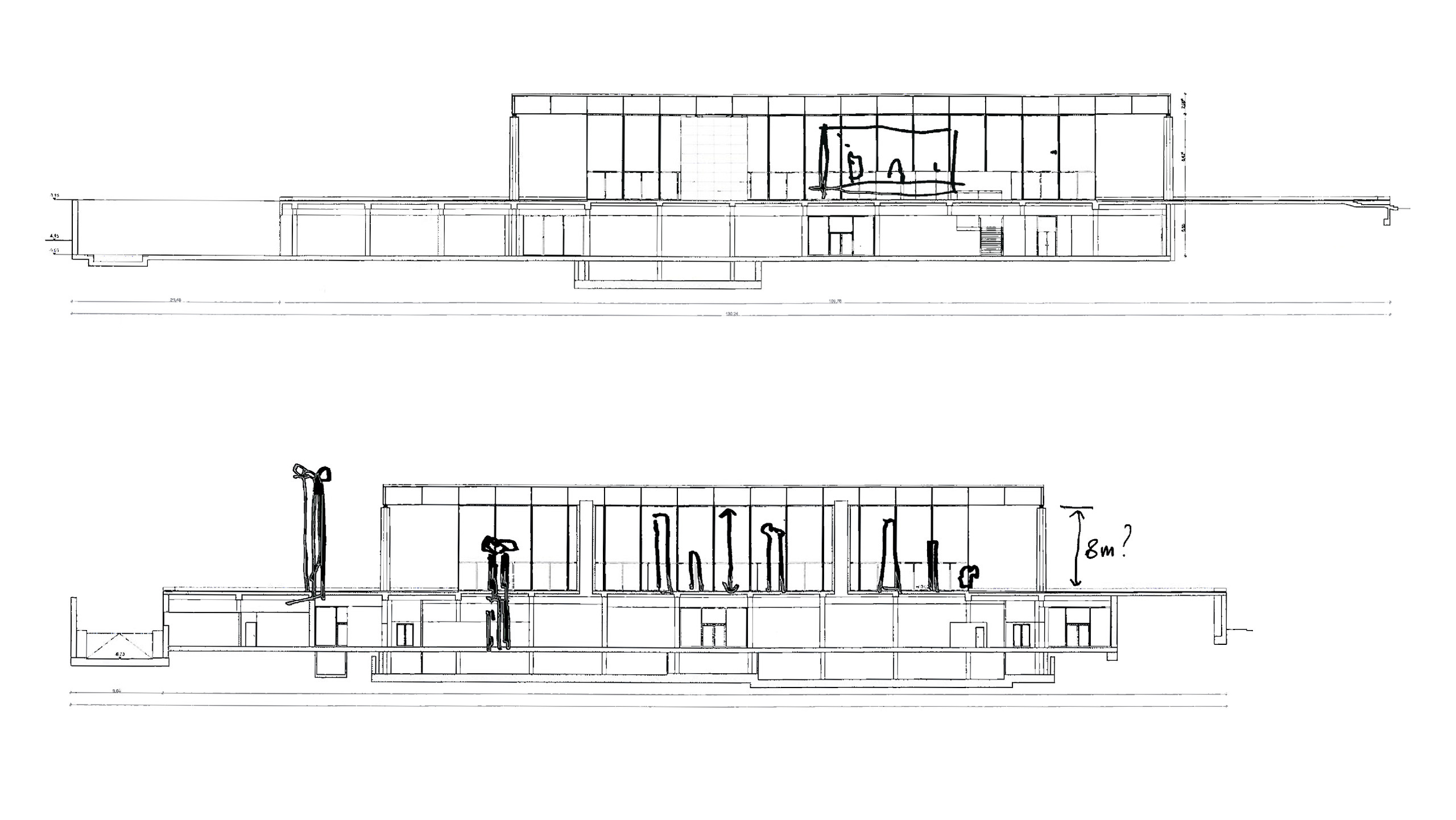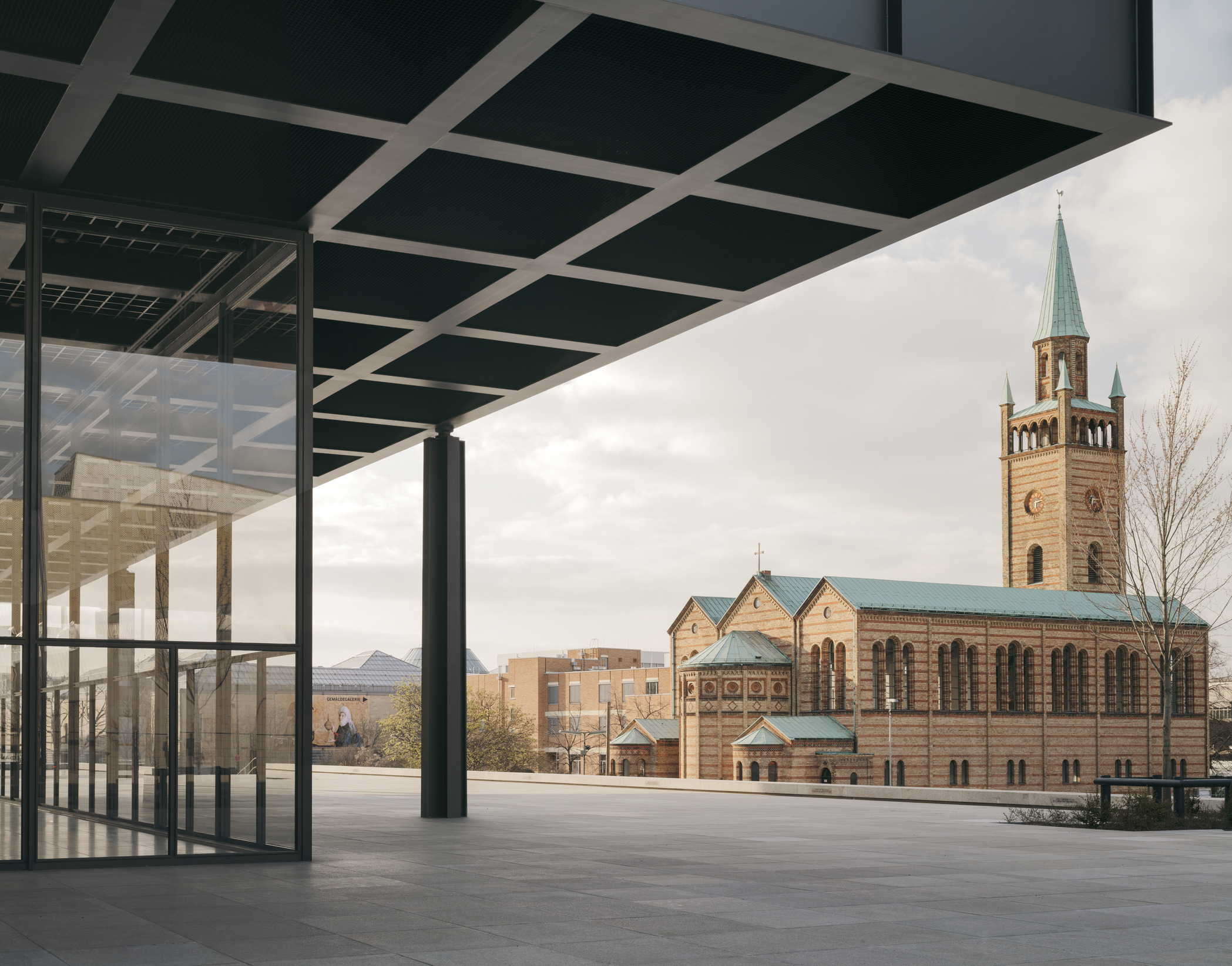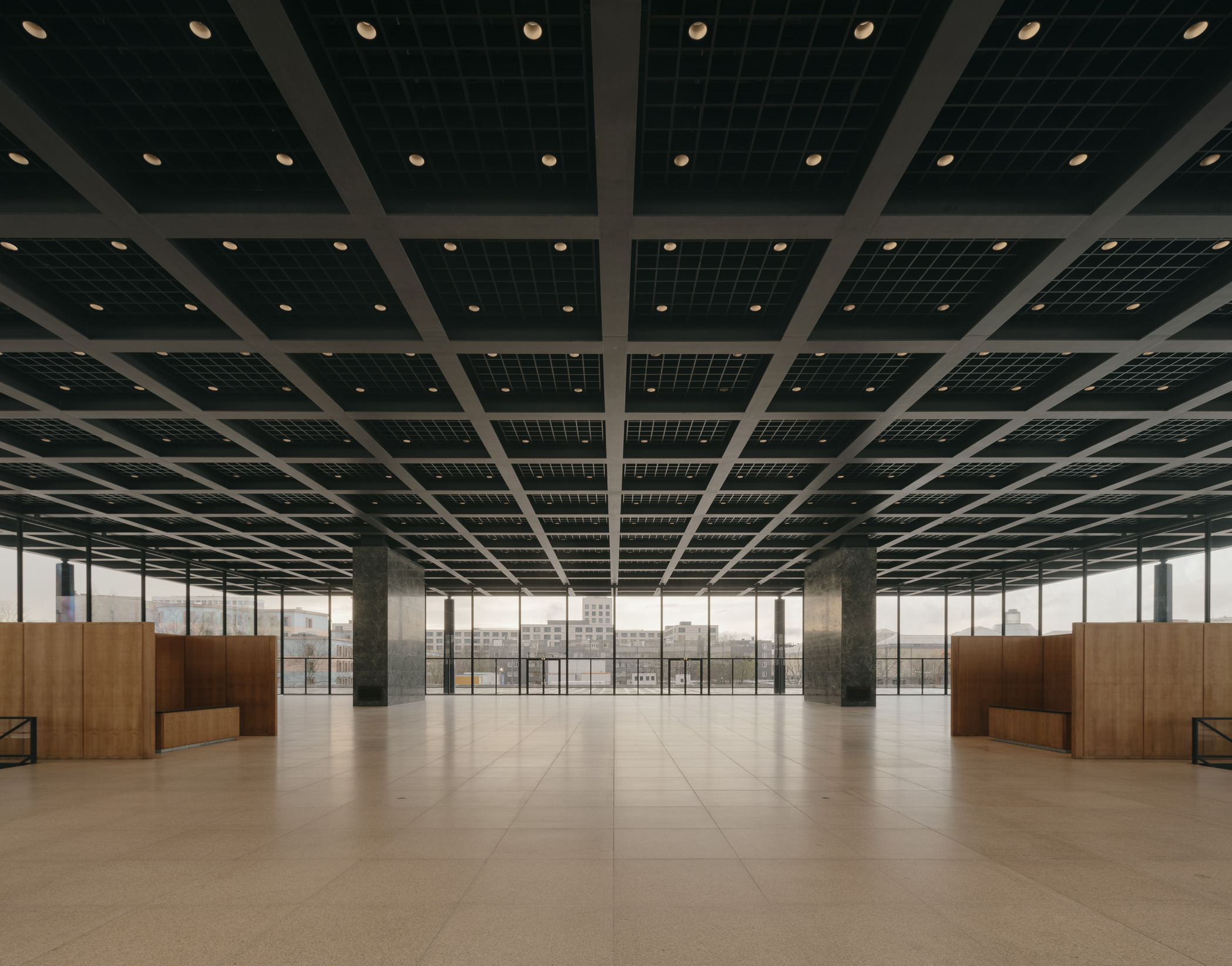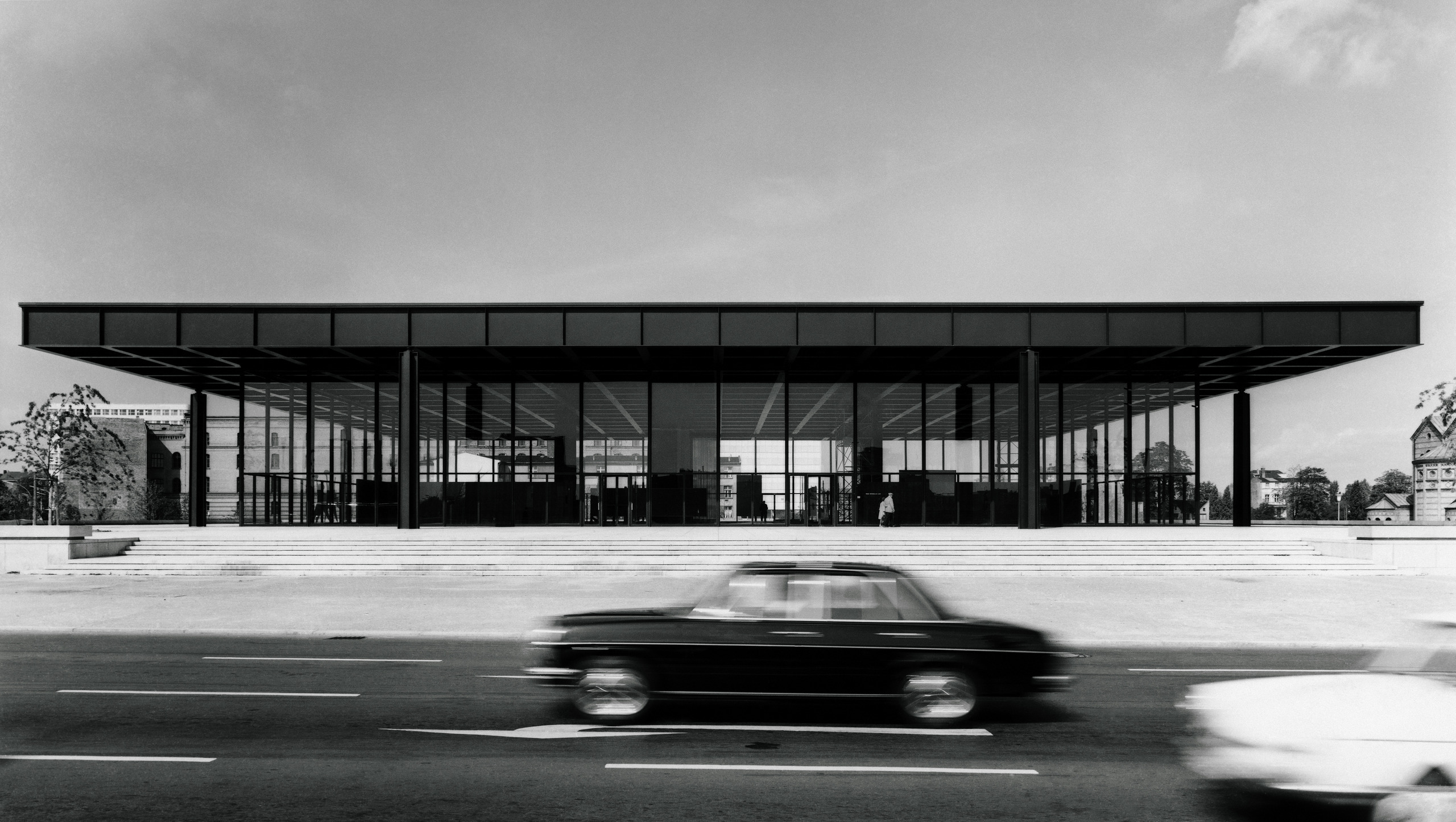âSticks and Stones, an interventionâ at Neue Nationalgalerie
Berlin, Germany
2014
David Chipperfield Architects were invited to create an intervention in the grand exhibition space of Mies van der Roheâs Neue Nationalgalerie in Berlin prior to its closure for renovation by David Chipperfield Architects Berlin at the start of 2015. For three months, from October to December 2014, the upper pavilion was transformed into a hypostyle hall featuring 144 tree trunks.
For the title of his intervention is borrowed from the beginning of an English childrenâs rhyme: âSticks and stones [may break my bones, but words will never hurt me.]â - pointing to two elements of Neue Nationalgalerie and architecture in general: columns and plinths. The intervention reflected on the rich cultural history of the column in architecture. Openness and density, inside and outside, nature and technology: a field of associations is evoked that stretches far back into the history of world architecture and circles around the cultural history of the column â from the colonnades of ancient temples to the Mosque of CĂłrdoba (8thâ10th century) and Frank Llyod Wrightâs mushroom-shaped concrete columns in the Johnson Wax Building (1936â1939) to practiceâs own building projects in the 21st century.
But the intervention also reflected specifically on the construction of the museum itself, erected from 1965 to 1968. The eight narrow steel supports of Miesâ design bear the weight of the monumental roof that seems to hover freely in the air because the supports are located far from the roof corners. The two pillar-like marble-covered installation structures inside the glass hall have no supporting function. Giving the illusion of returning to the construction phase, the 144 barked spruce tree trunks of the âSticks and Stonesâ intervention, each around eight meters in height, symbolically supported the weight of the âfloatingâ roof. They fit into the clear pattern shaped by the steel roof, the granite floor, and the overall proportions of the Neue Nationalgalerie. It was a playful new experience of space within the modernist rigor of the Miesâ design.
Images by Ute Zscharnt and David von Becker.
